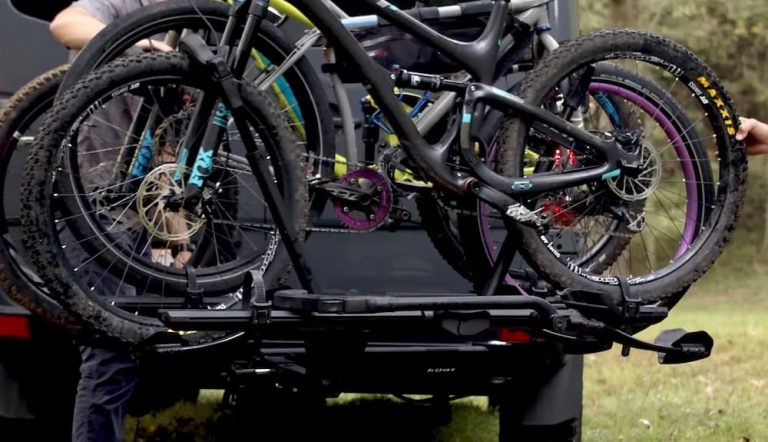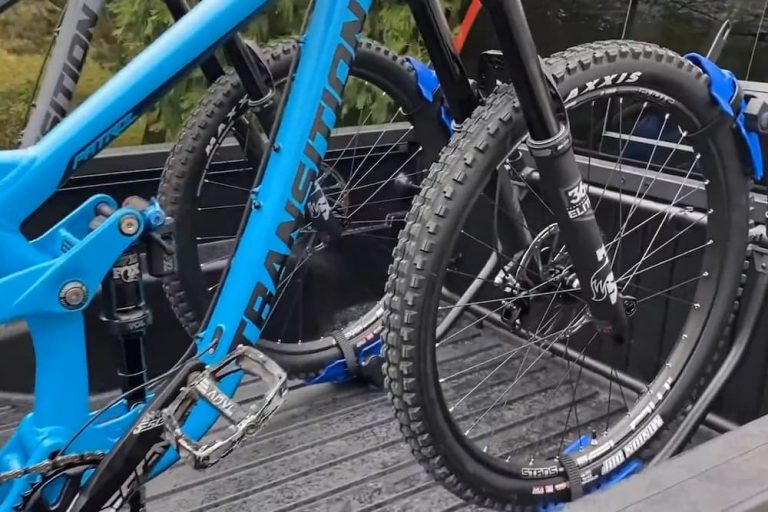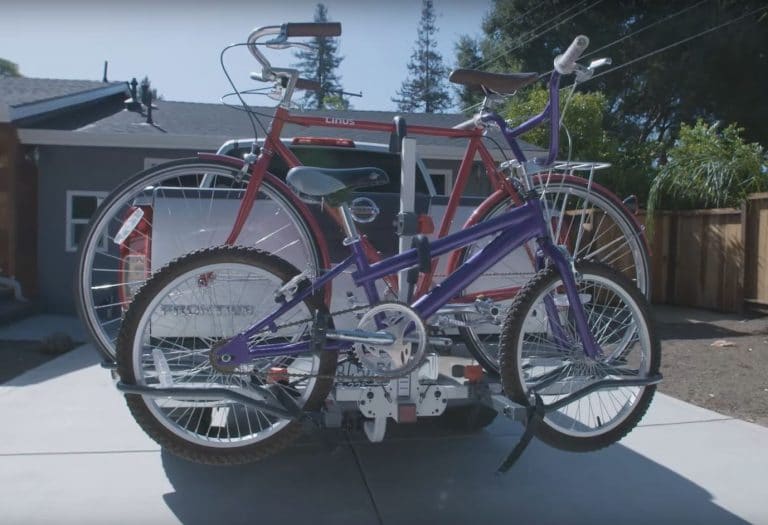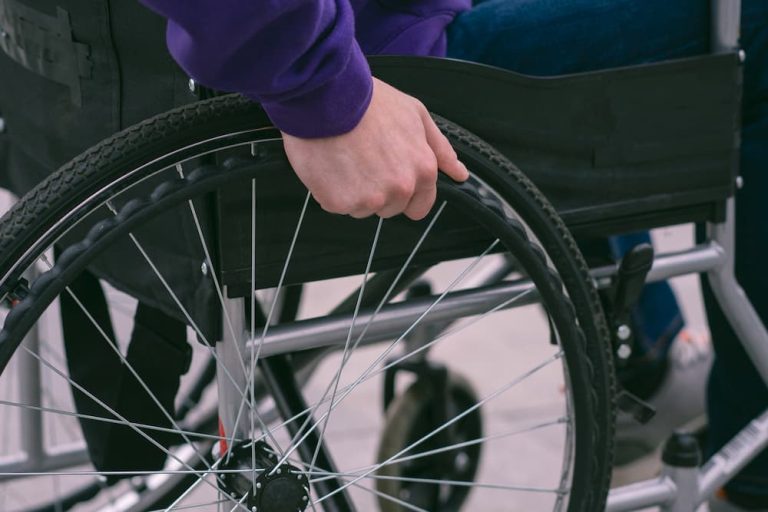How To Prevent Bike Rack From Scratching Your Car?
Every cyclist understands the joy of hitting the open road with their bike in tow. But there’s a common problem many of us face – how to prevent our bike racks from scratching our cars. It’s a frustrating issue, and if you’re reading this, chances are you’ve experienced it too.
You’ve invested in a bike rack to make your life easier, but instead, you’re left dealing with unsightly scratches and dents on your beloved vehicle. It’s a predicament that can leave you feeling helpless and annoyed. But rest assured, you’ve come to the right place.
In this article, I’ll delve into the nitty-gritty of preventing bike rack damage to your car. I’ll explore the different types of racks, their potential risks, and how to mitigate them. I’ll also discuss the importance of proper installation, regular maintenance, and the use of protective measures.
With years of cycling and bike maintenance experience under my belt, I’m here to guide you through this process. So, let’s get started and help you keep your car and bike in top shape!
Contents
Which Rack Type is More Prone to Scratching?
Bike racks come in a number of styles and sizes, allowing users to place the bike in a range of places on the car. These racks are perfect for carrying your bicycle, based on the vehicle you have and the type of the bike – hitch racks, roof racks, and trunk racks.
The hitch rack is not in immediate touch with the car, but the bicycle might strike with it if it is not securely mounted. Whenever the bike swings or the wheel rotates, it may collide with the vehicle, resulting in dents. Roof bike racks carry some of the same concerns as hitch-mounted racks, though with a few exceptions.
Rather than causing harm to the back of your automobile, it may cause harm to the roof. It is necessary to determine how much space the car has having bikes mounted. Foam mats are commonly used to put on top of trunk racks. After a while, the foam pads press over the car paint, causing dents, specifically when the bike rack is not tightly mounted.
The trunk bike rack, among all other styles of bike racks, is the one that does the greatest harm to the vehicle. Since the trunk bike rack is the one that makes direct contact with the vehicle.
Any scrapes or dents to the trunk of the vehicle will be visible. It is not a huge problem if the rack damages the vehicle’s roof since nobody really takes a look at the top. As they are mounted to the hitch, hitch bike racks rarely touch the car.
The main reason you will ruin the coat of paint is if the bike rack falls into the car by accident. Therefore, the trunk rack is the only thing left. You must be particularly cautious if you own a trunk rack.
Related reading: Bike That Fits In A Car
How to Keep Bike Rack from Scratching My Car?
There will always be a possibility of car damage, irrespective of the style of bike rack you choose. There have been terrible reports of rack crashes that required big bucks to fix. You do not wish it to occur to you, especially if you caused the incident, because collecting insurance coverage would be tough.
The details below can assist you in avoiding vehicle accidents created by bike racks.
Pick the Right Rack
Choosing the right bike rack might allow you to avoid causing harm to your vehicle. If you are planning to use a trunk bike rack regularly, skip it. This sort of bike rack might damage the paint plus wear it down at some point.
Select one with big foam padding that evenly transfers the load of the rack over several contacting surfaces. When you ride your bicycle occasionally, a trunk rack might be an excellent alternative.
If you often park in a garage, skip installing a roof bike rack. When you are going to park the car in a garage, you possibly need to take your bike down first. This is inconvenient when you use the bike rack regularly, also if you neglect to take the bicycle down first, everything around you might suffer significant deterioration.
If you are parking around the city, do not use a hitch bike rack. A hitch rack increases the car length and turn judging distances while reversing is extremely challenging. This makes crashing into parked cars more likely and causing significant harm to both the cars and the bicycles.
You also need to ensure that the bike rack can securely support the weight of the bicycles. The weight restriction of the bike rack may be found in the product details. Ensure your car hitch can hold the total weight of the bicycles and the rack when you are installing a hitch rack.
Related reading: How to Transport Bike in SUV?
Installing Rack Properly
Following the selection of the appropriate rack, the installation process begins. Even if you already have a rack, reread the user manual while placing a new rack. Utilize the supplies included with the base and abide by the directions. Do not wing it.
Try and ensure the bike rack is installed on a clean, grime-free, and non-greasy platform. If you do not do so, your bicycles might not fit correctly on the rack.
Ensure Everything is in Working Order
Spend some spare energy making sure your bike rack is safe and solid. This is also true for the bicycles themselves. It is important to double-check the rack on multiple occasions to ensure that the bikes do not come off, causing damage to both the car and the bicycle. Examine the bikes’ and rack’s durability, as well as the belts and every other element linked with the bike rack. If you need a bike rack regularly, you may even write a logbook to ensure you have secured everything properly.
Boost the Protection
You might use protective films to safeguard your car against bike rack-caused dents. Many racks include translucent protective paper to cover any areas where the bicycles get into touch with the car. Add a paint protection film or painter’s tape to the area where the rack rubs against the vehicle to avoid the paint from breaking out or damaging.
Take Care of the Rack
In my experience, taking good care of the rack you own makes everything easy. If you own a trunk-mount rack that has been properly placed, you must clean the touching areas, like the foam pads. This covers the paint layer it is resting on.
When dust is buried beneath the foam, it will scrape across the coat and damage it as if it were sandpaper. Dust will build up over the years, so check these touch areas regularly to prevent harm.
Mount Rack Properly
Even if you got everything within essence, if you do not attach your bike correctly, you might bring harm. Before transportation, apply the proper straps and double-check that the bicycles are attached correctly. To maintain your bicycle and vehicle’s top shape, make sure that nothing is missing the tune.
Use Car Scratch Protectors
Drawing from my experience, car scratch protectors are an affordable way to prevent damage. Car scratch protectors like the VRBFF Car Scratch Protector are durable, non-slip silicone pads designed to protect your car’s paint from scratches caused by bike racks. They are versatile and can be used anywhere in the car that needs slip resistance.
However, I have discovered that sometimes they are tricky to install, and they may not fit all car and rack designs. These pads work by providing a cushion between the bike rack’s metal hooks and your car, preventing scratches and damage to the paint.
Things to Keep in Mind
Here are some practical guidelines for harnessing a bike rack to safeguard your car. Be aware of the environment at all times. So that you do not strike anything, make a visible indication of the whereabouts of your rack.
Before you move, double-check all straps, hooks, and locking on your bicycle. Stop attempting to overload the rack as this increases the chance of it swaying or falling, which can bring significant harm based on the style of rack you have.
Check that all pieces of your bike rack are in good working order before operating it. Also, when you are not using the rack, consider putting the rack aside. Keeping a bike rack on a car doubles the likelihood of it causing damage to your car. In addition, exposing a bike rack to severe conditions might accelerate its deterioration.
Conclusion
Preventing a bike rack from scratching your car involves a combination of careful selection, proper installation, and regular maintenance. The type of rack you choose – be it a hitch, roof, or trunk rack – plays a significant role in the potential risks to your vehicle. But these risks can be significantly mitigated with the right precautions.
- Investing in protective measures such as foam padding, protective films, and car scratch protectors is a wise move. They might seem like an extra expense now, but they can save you from costly repairs down the line.
- Regular checks and maintenance are also crucial. Ensure your rack is always in good working order and clean the areas where the rack touches your car. Dust and grime can act like sandpaper over time, causing damage to your car’s paint.
- Before hitting the road, always make sure your bike is securely attached to the rack. A loose bike can cause damage to both your car and the bike itself.
In my experience, a little extra care and attention can go a long way in preserving the condition of your car and your bike. If you take the time to protect both, you’ll enjoy many more years of cycling adventures.
Your bicycle is more than just a piece of equipment – it’s a part of your lifestyle. And your car is an essential part of that lifestyle too. When it comes to preventing your bike rack from scratching your car, a little extra effort can go a long way.






